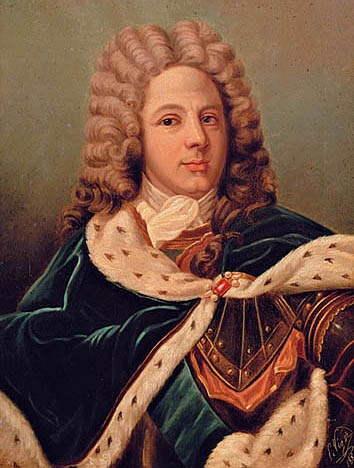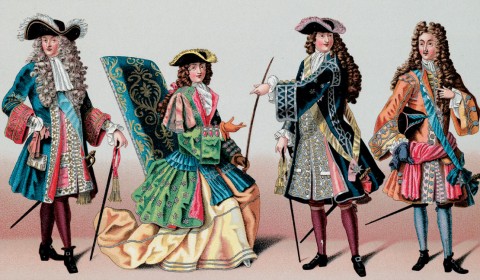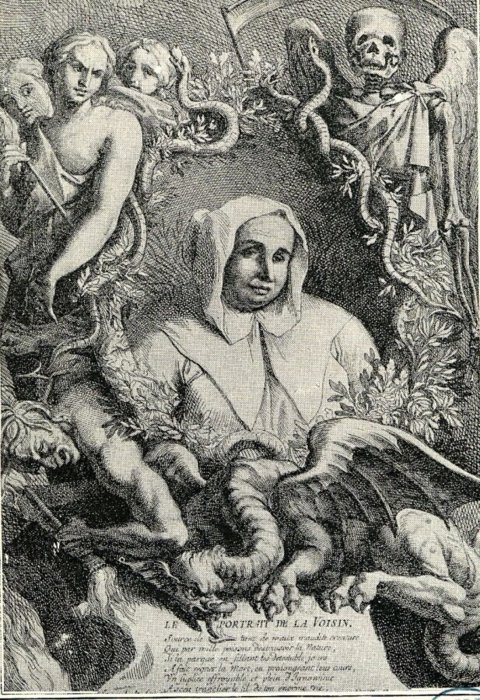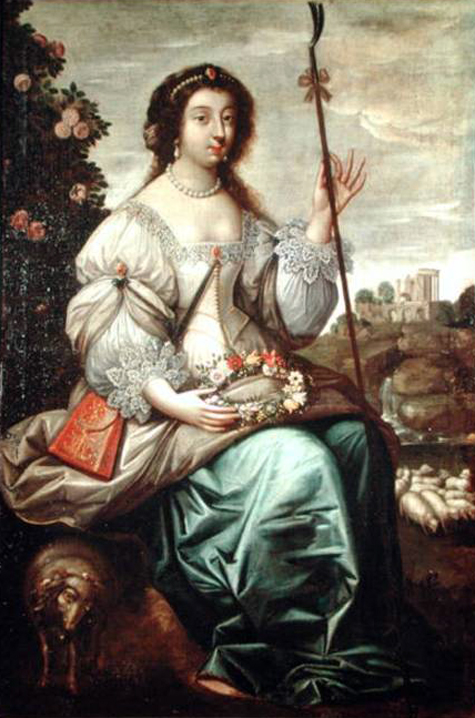Françoise-Thérèse de Voyer de Dorée, dite Mademoiselle de Dorée
Coming from a less prestigious and younger branch of the Voyer family, Françoise-Thérèse’s date of birth is unfortunately not known. She was a daughter of René de Voyer, Chevalier et Seigneur de Dorée, who was known as the Comte de Dorée and served as councillor to Louis XIV, while his wife acted as governess to the children Louis XIV had with Madame de Montespan.
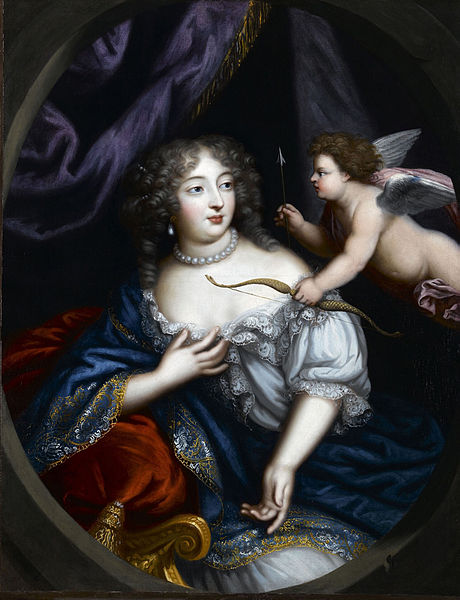
Françoise-Thérèse, known at court as Mademoiselle Dorée/d’Oré/Doré, was one of at least four children the couple had. René de Voyer de Dorée, who died only aged two; Louis-Joseph de Voyer de Dorée, who died aged only nineteen at the Battle of Seneff as lieutenant of the French Guards; Marie-Angélique de Voyer de Dorée, who seems to have succeeded her mother as governess of La Montespan’s children and married Antoine Michel de Tambonneau.
Mademoiselle Dorée joined the court of Louis XIV as part of Madame de Montespan’s clique and seems to have had an affair with the Sun King in 1681.
The memoirs of the time tell two different stories on how this affair came to happen. It was the time as Louis XIV could not quite decide whether he should stick with Madame de Montespan or rather turn to the more pious Madame de Maintenon. According to some, Françoise-Thérèse managed to catch the eye of the King and an attachment was formed, which put Madame de Montespan into a state of raging jealousy and made Madame de Maintenon fear for the King’s soul whenever she saw how attached he was to Françoise-Thérèse. According to others, Françoise-Thérèse was one of quite a few young ladies, who were pushed into the King’s direction by his maîtresse-en-titre Madame de Montespan as the Sun King grew a bit bored with his Athénaïs and in order to distract him from seeing Madame de Maintenon, who tried to talk him out of being gallant and a ladies-man.
Françoise-Thérèse’s fling with the Sun King did not last for long, but long enough to inspire a song: C’est n’est plus la mode à la cour; D’avoir un commerce d’amour; Le roy ne songe plus à plaire; Lere la, lere lanlere, lere la, lere lala. Si Châteauthiers, par sa beauté, N’a rien pu sur sa Majesté, Qui peut espérer de lui plaire? Lere la, lere lanlere, lere la, lere lala. Ne pouvant plus être putain, La Montespan s’est faite enfin; Maquerelle pour lui complaire; Lere la, lere lanlere, lere la, lere lala. Elle a fait venir la Doré, Dont on l’avait longtemps leurrée: Elle ne fit que lui déplaire, Lere la, lere lanlere, lere la, lere lala. Noailles était de son party, Mais il en eut le démenty; Il s’en plaigint à Dieu le Père, Lere la, lere lanlere, lere la, lere lala.
Mademoiselle Dorée seems not to have been fully able to please the King to his satisfaction or might not have wanted to do so.
Formerly known as Mademoiselle de Nantes, Louise-Françoise de Bourbon, daughter of Louis XIV and Madame de Montespan, married the dashing looking Louis de Bourbon, Duc de Bourbon and heir to the Prince de Condé, in 1685. Mademoiselle Dorée entered the into service of the new Duchesse de Bourbon as fille d’honneur the same year.
The Duchesse and her ladies led a bit of a debauched life, but then, in 1686, the Duchesse caught the smallpox. According to the Marquis de Dangeau, Françoise-Thérèse and fellow fille d’honneur Mademoiselle de Paumy shut themselves up in a room with the Duchesse. Dangeau mentions her again in 1689 as the number of fille d’honneur to the Duchesse were reduced. He writes Madame de Bourbon has decided to keep Mademoiselle de Paumy at her side, because she pleases her the most, while Mademoiselle de La Rochenart and Mademoiselle Dorée will enter a convent, unless Madame de Montespan will intervene. If Françoise-Thérèse indeed spent time in a convent, her abidance was rather short, since she became the mistress of the Comte de Comminges, gouverneur de Saumur, the same year.
Louis de Comminges inherited the title of Comte from his father in 1670 and according to Saint-Simon, he married Mademoiselle Dorée in secret. Dangeau seems to confirm it in his writings. Saying that as the Comte de Comminges died in 1712, he named the Marquis d’Effiat executor of his will, for which he received a diamond worth 1000 écus, and left his house at the rue Saint-Dominique to Françoise-Thérèse along with around 10000 écus, as his only inheritor. Married or not, no children were born to Françoise-Thérèse and Louis de Comminges. Just like her date of birth, the date of her demise is unknown as well.
